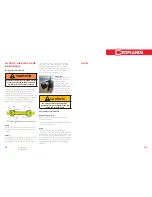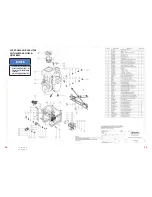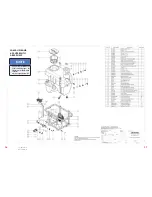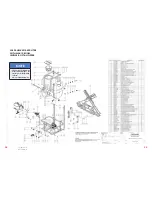
8
9
18/09/2016
LP-OMLINK-B
SAFETY WITH CHEMICALS
The Hazard
All agricultural chemicals or pesticides, as they are
commonly called, are biologically active. When
handled incorrectly or carelessly, they can be
dangerous to all living organisms such as humans,
birds, fish, bees, domestic animals and plants.
Method of Pesticide Entry
»
Oral
- Direct by drinking, splashing into mouth,
eating and smoking with contaminated hands,
eating sprayed produce, cleaning nozzles with
mouth.
»
Inhalation
- Nose, mouth, but predominately
the lungs.
»
Dermal -
Absorption through the skin. Increased
when skin is broken or perspiring.
»
What protective clothing and equipment is
needed?
»
Know the correct first aid/safety in case of
poisoning.
»
Seek medical advice if chemicals affect health.
Mixing the Product
»
Reduce or eliminate operator contact by using
closed loading systems such as chemical mixing
units, wettable powder mixtures or wettable
dispersible granules.
»
Use the right protective clothing when handling
the concentrate. The user is at greatest risk when
handling chemical in concentrate form.
»
Open bags carefully. Cut to open, do not tear.
»
Do not stir chemicals with hands or arms.
»
Choose the mixing site carefully & the fate of the
probable residues.
»
Do not mix more spray solution than is needed
and avoid needless disposal of unwanted
chemicals.
Rate of Absorption
»
While pesticides are absorbed more completely
orally and by inhalation, greater exposure and
more poisonings occur through skin (dermal)
contact. Ensure protective clothing is worn at all
times during chemical handling.
Hazard and Chance of Poisoning
»
The hazard and chance of poisoning is much
higher when handling pesticides in concentrate
form than in the dilute form.
Safe Handling - Know your Pesticides:
»
STOP!!
Read the label
»
Is it the right product?
»
What is its poisons schedule or toxicity?
»
What safety precautions are required?
»
What is its persistence and withholding period?
»
What is its mode of action?
»
Will it be a hazard to neighbouring crops and
people?
Plan your Spray Route
»
Observe weather conditions, especially wind
direction & speed.
»
Try to travel across wind and into untreated crop.
»
Prevent double or over spraying.
»
Prevent or minimise drift onto other crops, workers,
etc.
Disposal of Unwanted Pesticides and
Containers
»
Calibrate correctly to ensure you do not have a
large quantity of unwanted spray left over.
»
Rinse empty containers and pour residue into the
spray tank.
»
Dispose of containers in the correct manner and
where provided, use pesticide drum disposal
schemes.
Decontamination
»
Change out of protective clothing and shower as
soon as possible after spraying.
»
Wash before eating, drinking or smoking.
»
Provide clean water at filling site and on sprayer
in case of field contamination.
»
Wash and clean respirators regularly. Replace
respirator cartridges at recommended intervals.
Keep Sprayers and Safety Equipment in
Good Working Condition
»
Replace hoses and fittings when they leak.
»
Clean sprayer regularly.
»
Replace respirator filters regularly.
»
Do not use worn, faulty or contaminated safety
equipment.
Storage
»
Store pesticides in a locked, well-ventilated store
– check your local regulations to ensure your
store complies.
»
Do not pour pesticides into other containers;
especially not drink containers.
Pesticide Free Tractor Cabs
»
Ensure the cab filter is adequate for the pesticide
used.
»
Be careful not to contaminate the cabin
environment.
»
Cabin filters alone are not adequate when the
operator is required to leave the cab to refill the
sprayer. Safety equipment used outside the cab
should not be stored in the cab.
WARNING
Every product for sale will have a detailed label with application instructions, rate
of application, safety information and withholding periods. Always follow these
instructions carefully.






































